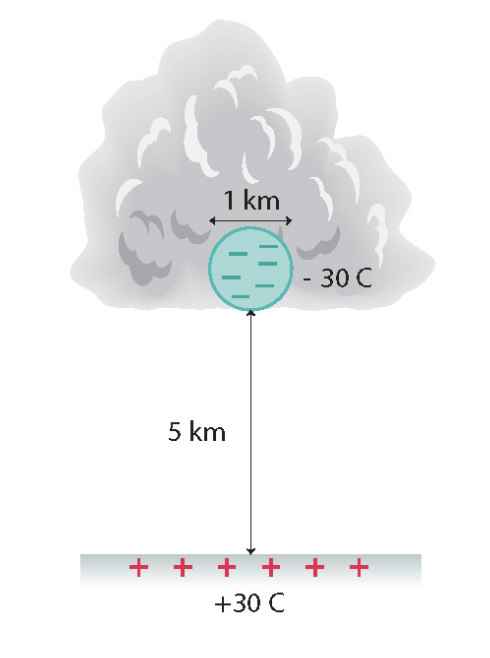Storm clouds build up large negative charges when wind causes friction between water droplets, dust, and ice particles in the cloud. The charge in the cloud induces an opposite and roughly equal charge in the ground below, effectively creating a very large capacitor as shown below, with the cloud being the negative electrode and the ground being the positive electrode. The cloud stores an enormous - 30 C of charge in a large volume, let's say roughly a sphere of diameter 1 km. The potential difference between the cloud and the ground is roughly 5 x 108 V. If a series of strikes transfers all of the charge from cloud to ground in 1 second, what is the average power during the series of strikes? Give your answer in GW. Give your answer to 2 significant digits.
Dielectric Constant Of Water
Water constitutes about 70% of earth. Some important distinguishing properties of water are high molar concentration, small dissociation constant and high dielectric constant.
Electrostatic Potential and Capacitance
An electrostatic force is a force caused by stationary electric charges /fields. The electrostatic force is caused by the transfer of electrons in conducting materials. Coulomb’s law determines the amount of force between two stationary, charged particles. The electric force is the force which acts between two stationary charges. It is also called Coulomb force.
Storm clouds build up large negative charges when wind causes friction between water droplets, dust, and ice particles in the cloud. The charge in the cloud induces an opposite and roughly equal charge in the ground below, effectively creating a very large capacitor as shown below, with the cloud being the negative electrode and the ground being the positive electrode. The cloud stores an enormous - 30 C of charge in a large volume, let's say roughly a sphere of diameter 1 km. The potential difference between the cloud and the ground is roughly 5 x 108 V. If a series of strikes transfers all of the charge from cloud to ground in 1 second, what is the average power during the series of strikes? Give your answer in GW. Give your answer to 2 significant digits.

Trending now
This is a popular solution!
Step by step
Solved in 2 steps with 2 images









